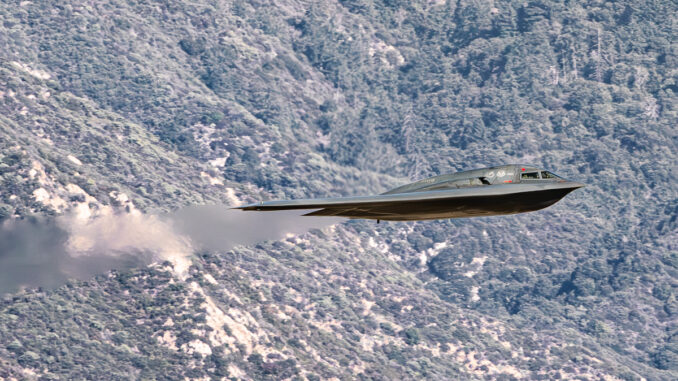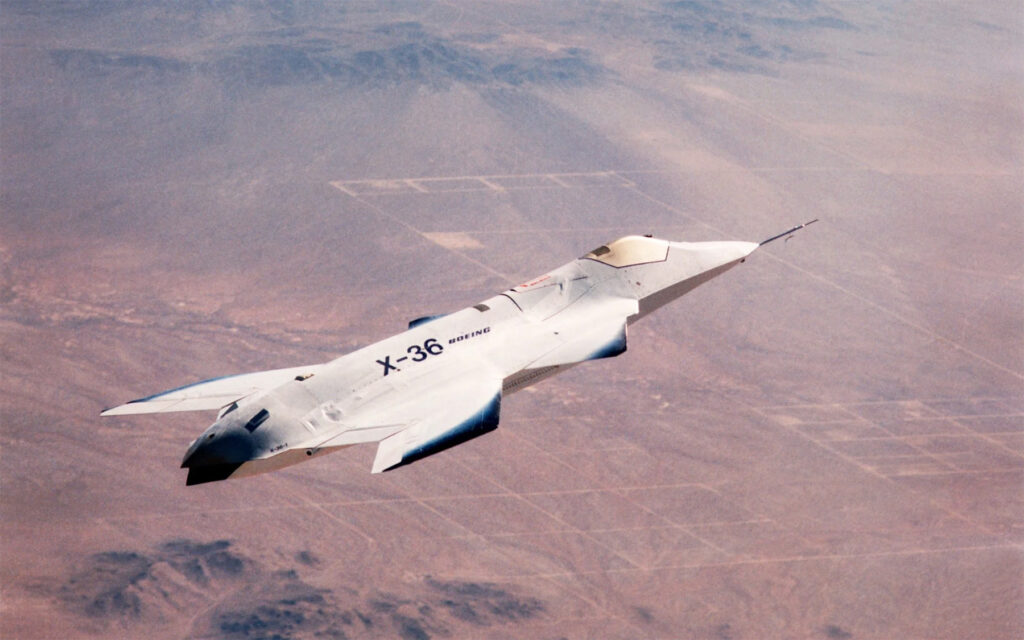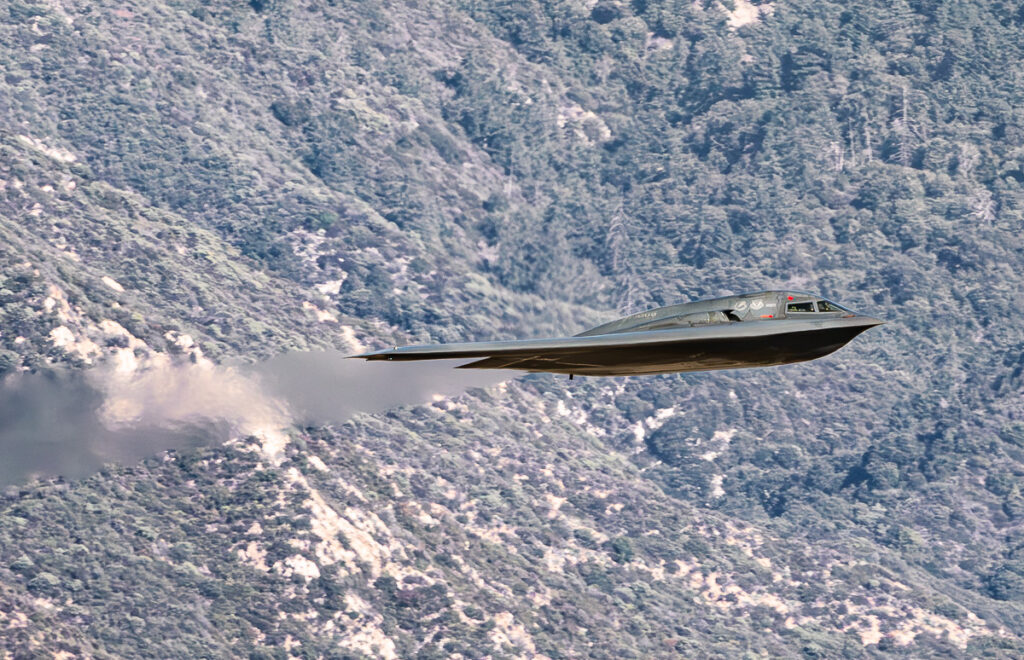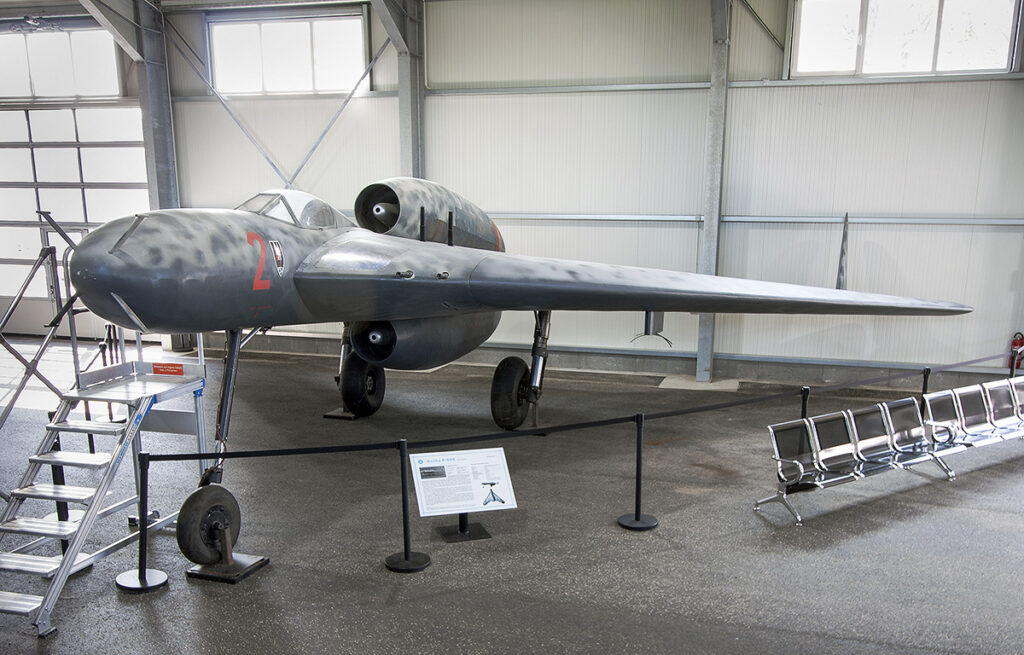
Technical and scientific analysis of tailless aircraft: operation, advantages, disadvantages and technological implications.
Tailless aircraft, often referred to as “flying wings”, are aircraft that do not have a distinct vertical or horizontal surface at the rear of the aircraft, like traditional tailplanes. These aircraft feature a design where the wings play a key role in stability and control. This type of design, although less common than traditional configurations, offers significant advantages in terms of aerodynamics and fuel efficiency. This article looks in detail at how tailless aircraft work, their advantages, disadvantages and technological implications.

How tailless aircraft work
Tailless aircraft are based on a unique design in which all the lifting surfaces are integrated into the wing. This design aims to reduce aerodynamic drag and improve aircraft efficiency. To understand how these aircraft work, it is crucial to look at the aerodynamic principles that govern their flight.
- Stability and control :
- Tailless aircraft use advanced control systems to maintain stability in flight. Longitudinal stability, normally provided by the horizontal tail, is managed here by the airfoil and geometry of the wing.
- The trailing edge flaps and ailerons play a key role. These control surfaces adjust the incidence of the wing to manage longitudinal balance and ensure stable flight.
- Drag reduction :
- The absence of tailplanes reduces parasitic drag, which improves fuel efficiency. A tailless wing has less shape drag, which means lower fuel consumption.
- Integration of flight control systems :
- Tailless aircraft rely heavily on fly-by-wire flight controls. These systems enable precise and rapid adjustments to be made to maintain the aircraft’s stability and manoeuvrability.
Advantages of tailless aircraft
Tailless aircraft offer several significant advantages over traditional configurations.
- Aerodynamic efficiency :
- Reduced drag translates into increased fuel efficiency. A tailless aircraft, such as the Northrop B-2 Spirit, uses this design to increase its range and flight time.
- Reduced structural weight:
- The absence of a tailplane reduces the number of structural components required, thereby reducing the overall weight of the aircraft. This translates into an improvement in the aircraft’s payload and efficiency.
- Radar stealth :
- Tailless aircraft have a lower radar signature. Their integrated shape reduces the angles and surfaces likely to reflect radar waves, thus improving their stealth.

Disadvantages of tailless aircraft
Despite their advantages, tailless aircraft also present challenges and limitations.
- Complex control systems :
- The need for advanced and redundant control systems increases the complexity and cost of development and maintenance. Fly-by-wire systems must be extremely reliable to compensate for the absence of a tailplane.
- In-flight stability :
- Tailless aircraft can be less stable than their traditional counterparts, particularly in terms of directional stability. This requires constant adjustments and precise management of the control surfaces.
- Sensitivity to aerodynamic disturbances :
- Turbulence and aerodynamic disturbance can have a more significant impact on tailless aircraft, requiring optimised design to minimise these effects.
Examples of tailless aircraft
Some notable examples of tailless aircraft illustrate the principles and performance of this design.
- Northrop B-2 Spirit :
- This American strategic bomber uses a tailless design to maximise stealth and efficiency. The B-2 can carry up to 23 tonnes of munitions and has an intercontinental range.
- Northrop YB-49:
- A prototype flying-wing bomber developed in the 1940s. Although the programme was abandoned, it provided valuable lessons on the challenges and benefits of tailless designs.
- Horten Ho 229:
- A German World War II project, the Horten Ho 229, was a tailless jet. Although only a few prototypes were built, it represented a significant technological advance for its time.

Technological consequences and future prospects
Tailless aircraft are opening up new perspectives in aviation, with important implications for the future.
- Development of new materials :
- Tailless design requires lightweight, strong materials to maximise structural efficiency. Advanced composites, such as carbon fibre, are playing a crucial role in these developments.
- Innovation in control systems:
- The development of flight control technologies and advanced control algorithms is helping to overcome the stability challenges of tailless aircraft. These innovations could also find applications in other areas of aviation.
- Environmental impact:
- Tailless aircraft, with their increased fuel efficiency, can help reduce aviation’s carbon footprint. This design could be key to meeting future environmental requirements and CO2 emission reduction targets.
Tailless aircraft represent a significant advance in aeronautics, offering significant advantages in terms of aerodynamic efficiency, stealth and weight reduction. However, they also present significant technological challenges, particularly in terms of stability and the complexity of control systems. Continued innovations in materials and flight control technologies promise to overcome these challenges, paving the way for wider applications and increased adoption of this design in the future of aviation.
War Wings Daily is an independant magazine.